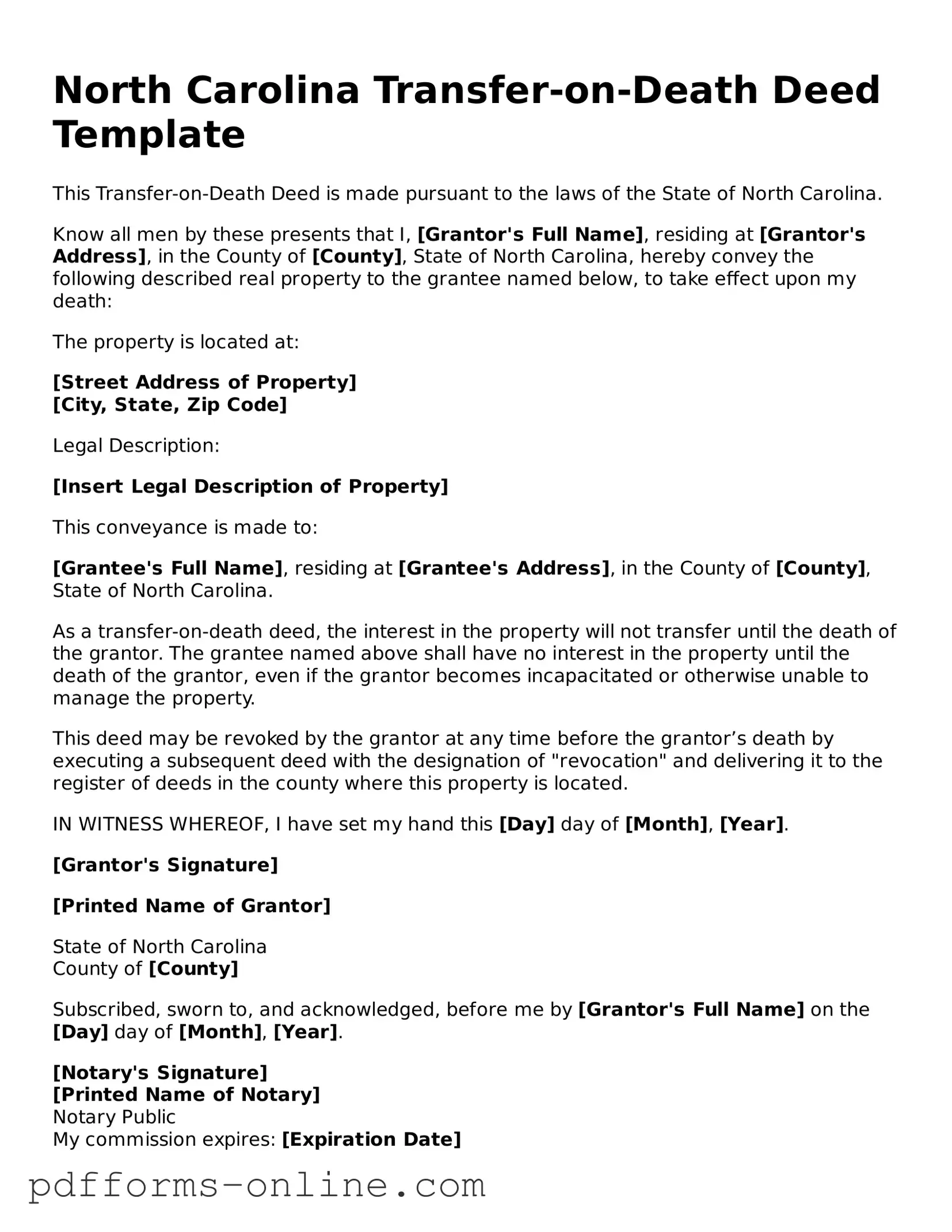North Carolina Transfer-on-Death Deed Template
This Transfer-on-Death Deed is made pursuant to the laws of the State of North Carolina.
Know all men by these presents that I, [Grantor's Full Name], residing at [Grantor's Address], in the County of [County], State of North Carolina, hereby convey the following described real property to the grantee named below, to take effect upon my death:
The property is located at:
[Street Address of Property]
[City, State, Zip Code]
Legal Description:
[Insert Legal Description of Property]
This conveyance is made to:
[Grantee's Full Name], residing at [Grantee's Address], in the County of [County], State of North Carolina.
As a transfer-on-death deed, the interest in the property will not transfer until the death of the grantor. The grantee named above shall have no interest in the property until the death of the grantor, even if the grantor becomes incapacitated or otherwise unable to manage the property.
This deed may be revoked by the grantor at any time before the grantor’s death by executing a subsequent deed with the designation of "revocation" and delivering it to the register of deeds in the county where this property is located.
IN WITNESS WHEREOF, I have set my hand this [Day] day of [Month], [Year].
[Grantor's Signature]
[Printed Name of Grantor]
State of North Carolina
County of [County]
Subscribed, sworn to, and acknowledged, before me by [Grantor's Full Name] on the [Day] day of [Month], [Year].
[Notary's Signature]
[Printed Name of Notary]
Notary Public
My commission expires: [Expiration Date]
